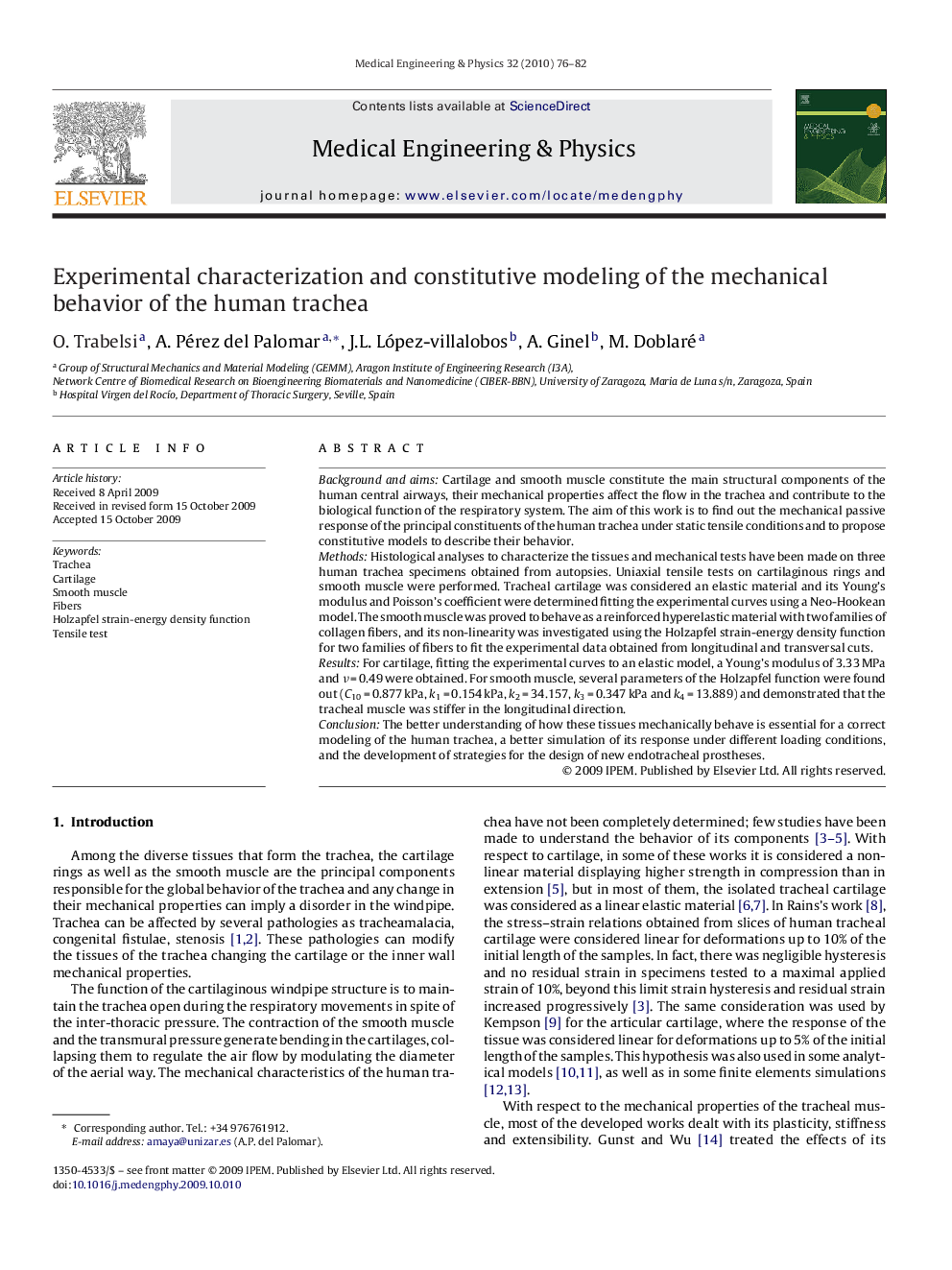| کد مقاله | کد نشریه | سال انتشار | مقاله انگلیسی | نسخه تمام متن |
|---|---|---|---|---|
| 876765 | 910863 | 2010 | 7 صفحه PDF | دانلود رایگان |

Background and aimsCartilage and smooth muscle constitute the main structural components of the human central airways, their mechanical properties affect the flow in the trachea and contribute to the biological function of the respiratory system. The aim of this work is to find out the mechanical passive response of the principal constituents of the human trachea under static tensile conditions and to propose constitutive models to describe their behavior.MethodsHistological analyses to characterize the tissues and mechanical tests have been made on three human trachea specimens obtained from autopsies. Uniaxial tensile tests on cartilaginous rings and smooth muscle were performed. Tracheal cartilage was considered an elastic material and its Young's modulus and Poisson's coefficient were determined fitting the experimental curves using a Neo-Hookean model. The smooth muscle was proved to behave as a reinforced hyperelastic material with two families of collagen fibers, and its non-linearity was investigated using the Holzapfel strain-energy density function for two families of fibers to fit the experimental data obtained from longitudinal and transversal cuts.ResultsFor cartilage, fitting the experimental curves to an elastic model, a Young's modulus of 3.33 MPa and ν = 0.49 were obtained. For smooth muscle, several parameters of the Holzapfel function were found out (C10 = 0.877 kPa, k1 = 0.154 kPa, k2 = 34.157, k3 = 0.347 kPa and k4 = 13.889) and demonstrated that the tracheal muscle was stiffer in the longitudinal direction.ConclusionThe better understanding of how these tissues mechanically behave is essential for a correct modeling of the human trachea, a better simulation of its response under different loading conditions, and the development of strategies for the design of new endotracheal prostheses.
Journal: Medical Engineering & Physics - Volume 32, Issue 1, January 2010, Pages 76–82